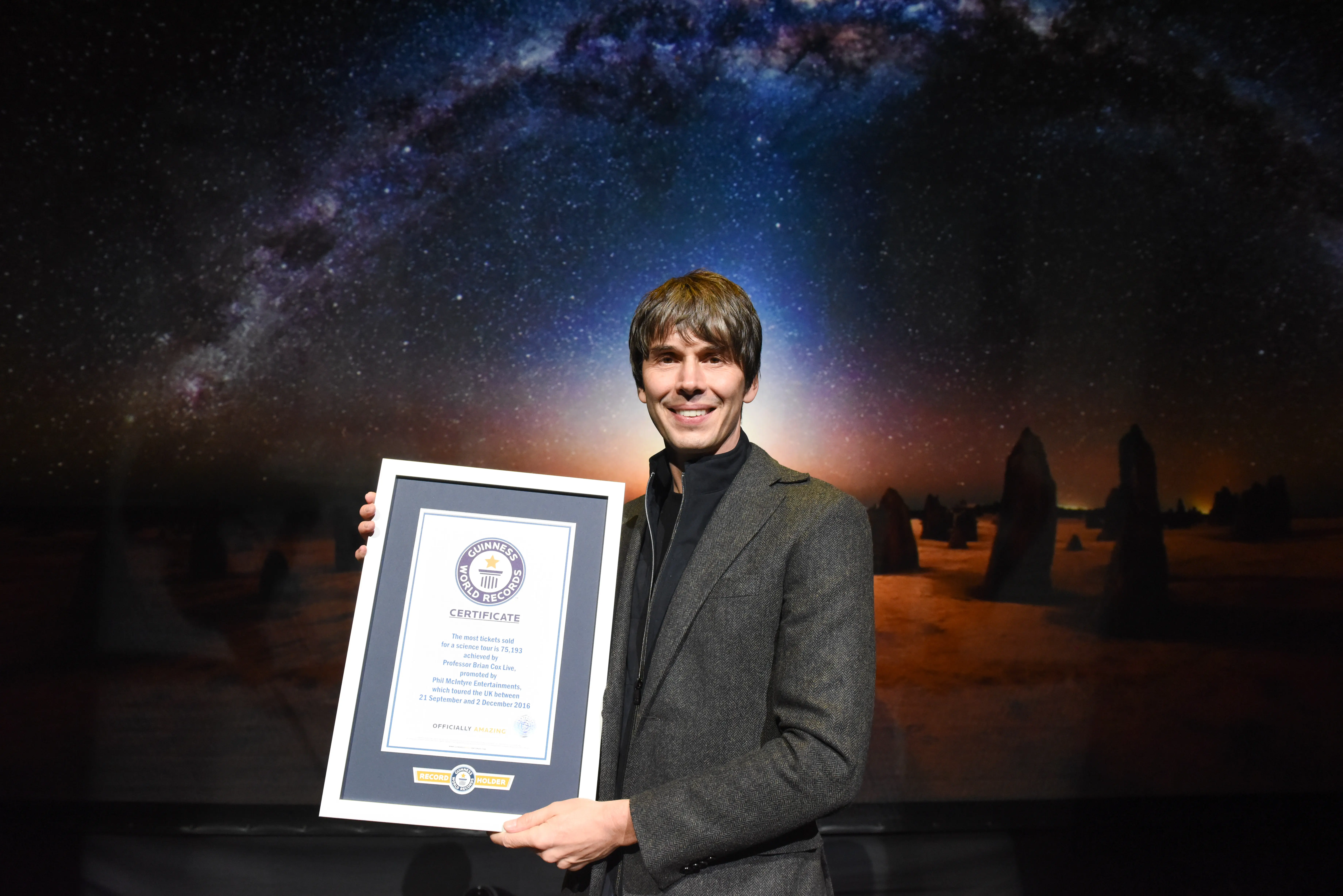Is 3I/Atlas an alien spacecraft? Physicist Brian Cox breaks silence on the Manhattan-sized interstellar object
-
 LONDON, UNITED KINGDOM - DECEMBER 02: Professor Brian Cox Achieves Guinness World Records Title For Most Tickets Sold For A Science Tour at the Hammersmith Apollo On December 02, 2016 in London, England. (Photo by Nicky J. Sims/Getty Images)
LONDON, UNITED KINGDOM - DECEMBER 02: Professor Brian Cox Achieves Guinness World Records Title For Most Tickets Sold For A Science Tour at the Hammersmith Apollo On December 02, 2016 in London, England. (Photo by Nicky J. Sims/Getty Images)When astronomers discovered a mysterious object streaking through the Solar System on July 1, 2025, they quickly realized it was no ordinary comet. With an eccentricity exceeding 6, the icy traveler was confirmed to be interstellar, only the third such object ever found. Named 3I/Atlas, it instantly sparked scientific excitement — and, inevitably, waves of online speculation suggesting it might be an alien probe. Now, physicist Brian Cox has weighed in, offering a calm, scientific perspective on the extraordinary visitor.
Brian Cox calls 3I/Atlas a “Message from a dead world”
British physicist and science communicator Professor Brian Cox has spoken out to dispel the growing rumors surrounding 3I/Atlas, the comet-like body currently being tracked by NASA, ESA, and observatories worldwide.
In an interview with the BBC, Cox reflected on the object’s immense age and humanity’s progress in understanding the cosmos:
“There’s an estimate a couple of days ago that it might have formed seven and a half billion years ago, so it was made before the Earth and the Sun had formed out of a cloud of dust. And it’s been on its journey across the Milky Way galaxy… and the thing I find remarkable — it’s only 400 years ago that we were arguing about whether the Earth went around the Sun,” he said.
Cox emphasized that this perspective highlights human achievement rather than alien intervention:
“Now we’ve sent spacecraft to the planets that Kepler and others were seeing move in the sky, and we’re taking photographs of interstellar comets from the surface of other planets. That, to me, is a remarkable story,” he added.
On social media, Cox also addressed claims that 3I/Atlas might be a spacecraft:
“Just to be clear — given recent drivel online — Comet 3I/Atlas is a comet, made of carbon dioxide and water ices and bits of other stuff. It is entirely natural in origin, its orbit is as expected, and it will whizz around the Sun and then disappear off into the galaxy again.”
Rather than feeding conspiracy theories, Cox offered a more poetic interpretation. He described 3I/Atlas as “a message from a dead world,” suggesting that the comet could be debris from a long-vanished planetary system:
“If, in some far future, it passes another inhabited solar system,” he mused, “I hope those beings will see it for what it truly is — a visitor from another star, a pristine remnant of a long-dead world, just passing through. Isn’t that wonderful enough?”
What we know about 3I/Atlas
Discovered by the Asteroid Terrestrial-impact Last Alert System (ATLAS) in July 2025, 3I/Atlas is traveling through the Solar System on a hyperbolic trajectory, confirming its origin beyond the Sun’s gravitational influence. Its discovery follows the famous interstellar objects ‘Oumuamua (2017) and 2I/Borisov (2019), marking a rare opportunity to study material formed in another star system. Early observations by the Hubble Space Telescope revealed a teardrop-shaped cocoon of dust surrounding an icy nucleus between 440 meters and 5.6 kilometers wide. As sunlight heats the comet, gases such as carbon dioxide, carbon monoxide, and water ice sublimate into space, providing astronomers with a chemical fingerprint of its ancient composition.
According to NASA and ESA data, 3I/Atlas reached its closest approach to the Sun in late October 2025, coming within about 203 million kilometers (126 million miles) — just inside Mars’s orbit — before swinging back into deep space. It will make its closest pass to Earth on December 19, remaining a safe 270 million kilometers (168 million miles) away. For skywatchers, 3I/Atlas will reappear in mid-November 2025, visible through mid-December using telescopes of 8 to 10-inch aperture under dark skies.
Beyond its spectacle, the comet offers a scientific treasure trove. Researchers using instruments such as JWST and SPHEREx hope to decode its elemental makeup, unlocking clues about the early chemistry of other planetary systems. Some scientists even propose that 3I/Atlas could be a fragment from a shattered planet ejected billions of years ago — a literal relic of a “dead world,” echoing Cox’s words.
Physicist Brian Cox’s response to the alien rumors surrounding 3I/Atlas underscores a vital message: that natural phenomena can be more wondrous than fiction.
TOPICS: 3I/ATLAS
- The Vera C. Rubin Observatory could detect a large number of interstellar comets like 3I/ATLAS
- Avi Loeb reports new radio constraints and size estimates for interstellar object 3I/ATLAS
- Interstellar comet 3I/ATLAS shows rotating jets in a rare sun-facing tail
- What Europa Clipper and Parker Solar Probe discovered about interstellar comet 3I/ATLAS